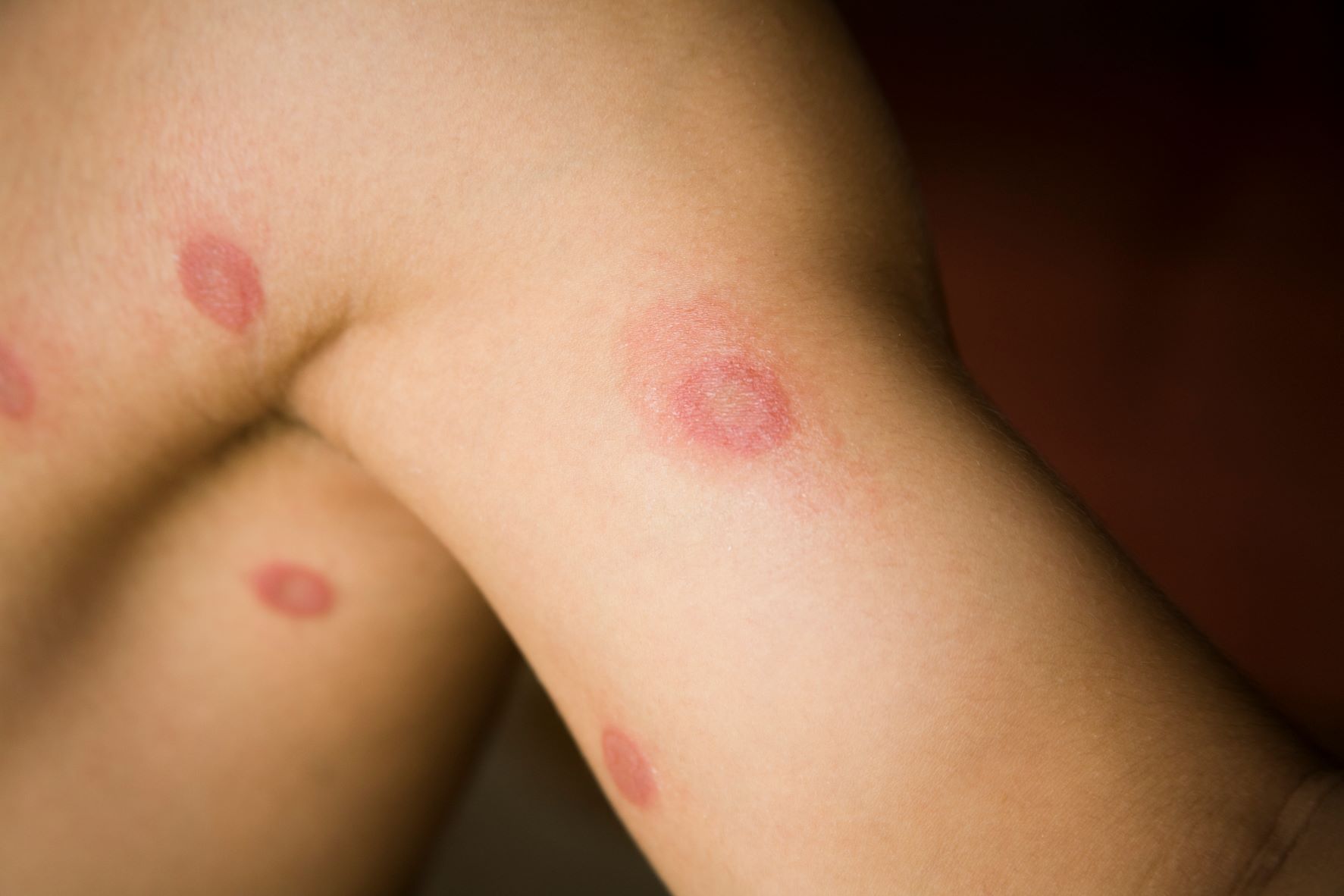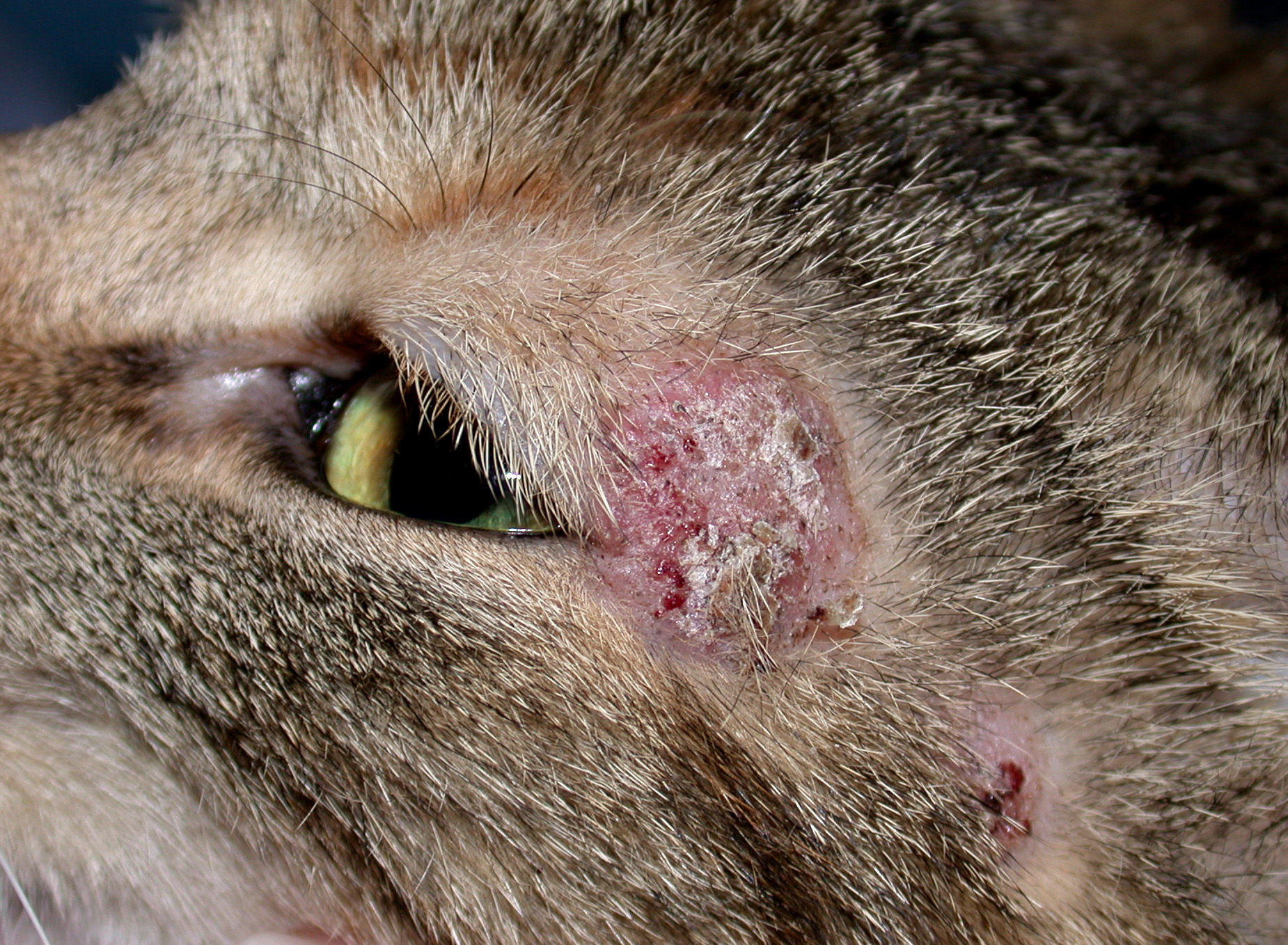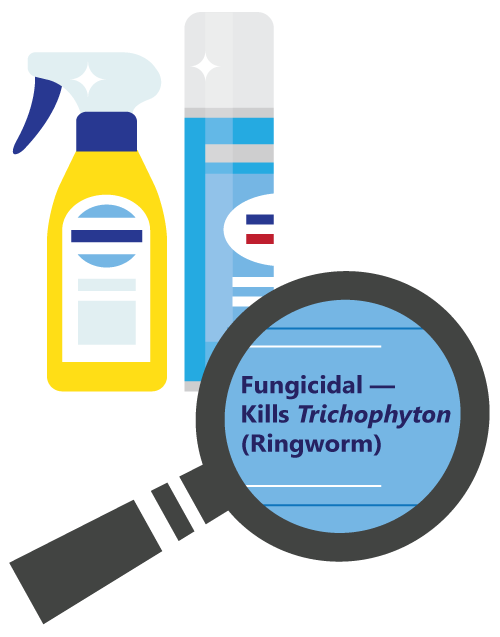What is ringworm?
Ringworm is a skin infection that is caused by a fungus,
not a worm. It's called "ringworm" because it often appears as a ring-shaped rash on the skin. Both people and animals can get ringworm. This webpage provides information about the form of ringworm that can spread from cats and dogs to people. For information about the other forms of ringworm, visit the
U.S. Centers for Disease Control and Prevention (CDC) ringworm webpage.
What are the symptoms of ringworm in people?

Symptoms of ringworm first appear 4-14 days after having contact with an infected animal, its fur, or a contaminated surface or object, such as pet bedding. The most common symptoms include:
An itchy, ring-shaped rash on the skin
Patches of red, scaly, cracked skin
Hair loss near the rash
The red, circular ringworm rash can occur anywhere on the body, but is usually found on the face, arms, and legs. The rash might also become crusted over or filled with pus, and hair around the area of the rash might fall out.
Who can get ringworm?
Anyone can get ringworm. People who have close contact with infected animals, such as dogs and cats (especially puppies or kittens) and pet rats, are more likely to get ringworm. Children, seniors, and people who have weakened immune systems are also more likely to get ringworm.
How do people get ringworm?
People can get ringworm in the following ways:
-
Through contact with the skin or fur of an infected animal
-
By touching objects that are contaminated with the ringworm fungus, such as blankets and towels that an infected animal slept on
What should I do if I think I have ringworm?
If you think you have ringworm, talk to a healthcare provider. Your healthcare provider may test your skin for the fungus and may prescribe antifungal medication for treatment. If your healthcare provider determines that you or another person in your household has ringworm, all pets in the household should be examined and tested for ringworm, even if they look healthy.

What are the signs of ringworm in pets?
The most common signs that a pet has ringworm are:
Areas of hair loss with red, crusting, or scaling skin
Brittle, broken fur and nails
(Image source:
Merck)
What should I do if I think my pet has ringworm?
Many skin conditions in animals can look like ringworm, so it's important for a veterinarian to examine your pet.
If your pet has ringworm, it will likely clear up on its own. But your veterinarian may recommend shampoos, creams, or antifungal pills to help treat the infection and make your pet more comfortable. For long-haired animals, clipping your pet's fur short may help the affected areas stay dry and more quickly heal. Follow your veterinarian's instructions for your pet's treatment.
To protect yourself, other people, and pets in your household from ringworm, you should also:
Keep the infected pet in an isolated area in the home away from other pets and areas in the household until treatment is complete (this may take several weeks).
Limit human contact with the infected pet to only those activities that are necessary for its feeding and care. People at greater risk for infection (children, seniors, and people with weakened immune systems) should have no contact with the infected pet until treatment is complete.
Wear long sleeves and gloves when you handle animals with ringworm or apply medication to the affected area.
Always wash your hands afterward.
Check other pets in your household for signs of ringworm and talk to your veterinarian if you notice hair loss or a skin rash on other pets.
Clean and vacuum areas of the home where the infected pet commonly visits. Regular cleaning will help to remove infected fur or flakes of skin that can infect people or other animals.
After cleaning, disinfect the area where your pet spends time.
- For most hard surfaces, use a disinfectant that is labeled to work against the fungus that causes ringworm (called
Trichophyton), or use chlorine bleach diluted 1:10 (1/4 cup bleach in 1 gallon of water).
- For bedding and towels, wash with soap and hot water (bleach is not needed).
How can I protect my pet from getting ringworm?
Do not allow animals that may have ringworm into your house.
Avoid washing or bathing your pet too often. Excessive bathing removes natural defenses in and on an animal's skin. Consult with your veterinarian as to which shampoos are best for your pet and how often you should bathe it.
Take your pet to the veterinarian for regular check-ups.
How do I protect myself and my family from ringworm and other diseases transmitted by pets?
Wash your hands with soap and water after any contact with your pet. Make sure that children also wash their hands after playing with pets.
Vacuum areas of your home where your pet commonly visits to remove fur or skin that may be contaminated.
Wash pet bedding regularly.
Make sure that your pet gets regular check-ups from a veterinarian. By keeping your pet healthy, you can help to keep yourself and your family healthy.